Unlock Multichain: A Developer's Guide to Integrating with Mitosis

1. Introduction
The Developer's Challenge: How to Conquer Multichain?
You're building the next generation of decentralized applications (dApps). Your idea is brilliant, your code is elegant, but you face the reality: your potential users and the necessary liquidity are scattered across dozens of different blockchains and Layer 2 networks. How do you reach them all? How do you provide users with a seamless experience without forcing them through the hell of multiple bridges and wrapped tokens?
Creating a truly cross-chain dApp presents serious challenges for developers:
- Integration Complexity: Interacting with various bridges and messaging protocols requires deep knowledge, time, and resources. Each bridge has its own API, security features, and limitations.
- Liquidity Management: How can your application access user liquidity located on another blockchain? How can you ensure low slippage and fast settlement for cross-chain operations?
- Security: Choosing an insecure bridge for your dApp can jeopardize your users' funds and your reputation.
- Focus on Core Logic: Instead of concentrating on the unique value of your application, you're forced to spend precious time solving the infrastructural problems of interoperability.
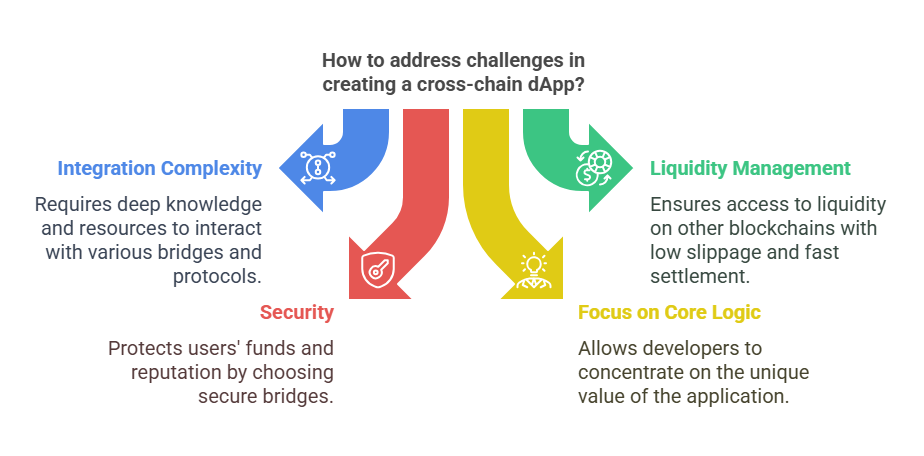
Mitosis: Your Toolkit for Cross-Chain Development
Imagine having a single, reliable, and easy-to-use tool that handles all the complexity of managing cross-chain liquidity and security. A tool that allows your dApp to seamlessly interact with assets and users from different networks. This is precisely the tool Mitosis aims to be.
Mitosis is not just a protocol for end-users; it is a fundamental liquidity infrastructure designed with developers' needs in mind. Its goal is to abstract away the complexity of cross-chain interactions, allowing you to focus on building the best dApps.
By integrating Mitosis, you potentially gain:
- Access to Global Liquidity: Allow users to make deposits or interact with your dApp using assets from any network supported by Mitosis.
- Improved UX for Your Users: Enable them to perform cross-chain operations directly from your application's interface, without needing to manually use external bridges.
- Reduced Development Complexity: Use standardized tools (SDKs, APIs – when available) to integrate cross-chain functionality, instead of dealing with each bridge individually.
- Enhanced Security: Rely on Mitosis's advanced security mechanisms (including EigenLayer AVS), reducing risks for your application and users.
The Goal of This Guide
This guide is intended for dApp developers who want to expand the reach of their applications and improve the user experience in the multichain world. We will cover:
- Conceptual Foundations: How can Mitosis be integrated into your dApp's architecture?
- Potential Use Cases: Examples of how Mitosis can enhance your application (cross-chain deposits, portfolio management, DeFi aggregators, etc.).
- Expected Tools: What toolkit (SDKs, APIs, documentation) might Mitosis provide to simplify integration (note: specific details will depend on the project's development stage and tool availability).
2. Integrating Mitosis: Concepts and Use Cases
Now that we understand the value Mitosis brings to developers, let's delve into how it can be integrated into your applications and the new possibilities this unlocks.
Part 1: Conceptual Integration Models
How exactly can Mitosis be "embedded" into your dApp? There are several potential models, depending on your application's architecture and the desired level of integration:
- Frontend Integration:
- How it works: Your application provides the user with an interface to initiate a cross-chain transfer via Mitosis. The frontend interacts with the user's wallet to sign transactions on the source chain and can track the transfer status via Mitosis APIs or events.
- Example: A "Deposit from another network" button in your DeFi protocol that opens a Mitosis widget or interface for selecting the source network and asset.
- Pros: Relatively simple integration, doesn't require deep changes to your dApp's backend or smart contracts.
- Cons: The core logic of the cross-chain transfer executes outside your main smart contract.
- Smart Contract Integration:
- How it works: Your smart contracts directly interact with Mitosis contracts (or its underlying messaging protocol, like Hyperlane) to send and receive cross-chain messages and liquidity.
- Example: Your smart contract on rollup A can call a function that initiates a user's fund transfer via Mitosis from rollup B and automatically credits their balance in your protocol on rollup A upon confirmation of the transfer.
- Pros: Allows for the creation of truly native cross-chain functions where all logic is encapsulated within your contracts. Opens the door to complex cross-chain composability.
- Cons: More complex integration, requires a deep understanding of Mitosis architecture and messaging protocols.
- Hybrid Model:
- How it works: A combination of the first two approaches. For example, the frontend initiates the transfer, and your dApp's smart contract "listens" for Mitosis events on the destination chain and automatically performs certain actions upon receiving the funds.
- Pros: Balances integration simplicity with automation capabilities.
The choice of model depends on your goals. For simple deposit acceptance from other networks, frontend integration might suffice. For creating complex cross-chain protocols, smart contract integration will be necessary.
Part 2: Practical Use Cases for dApps
What specific types of applications can benefit most from integrating Mitosis?
- DeFi Protocols (Lending, DEX, Staking):
- Cross-Chain Deposits/Loans: Allow users to provide collateral or take out loans using assets from any supported network without manually using bridges.
- Cross-Chain Swaps (via Aggregators): A DEX aggregator can use Mitosis to find the best prices and route swaps across different networks, providing a unified interface to the user.
- Cross-Chain Position Management: Enable users to easily move their positions (e.g., LP tokens, debt positions) between identical or similar protocols on different networks to optimize yield or manage risk.
- Cross-Chain Wallets and Portfolio Management:
- Unified Balance: Display user assets from all networks in a single interface and allow easy movement between networks using Mitosis.
- One-Click Cross-Chain Actions: Implement functions like "send stablecoins from Polygon to Solana" directly from the wallet.
- NFT Marketplaces and GameFi Platforms:
- Cross-Chain NFT Purchase/Sale: Allow users to buy NFTs on one network using funds from another network.
- Game Asset Transfer: Enable players to move in-game items or currency between different gaming appchains or from an appchain to the mainnet for trading.
- DAOs and Governance:
- Cross-Chain Voting: Allow governance token holders to vote in a DAO even if their tokens are on a different blockchain, relaying votes through a secure messaging channel.
- Cross-Chain Treasury Management: Simplify DAO treasury management for assets distributed across different networks.
- Account Abstraction:
- Cross-Chain Smart Wallets: Mitosis can be a key component for smart wallets (ERC-4337), enabling them to pay gas or execute transactions on one network using funds from another.
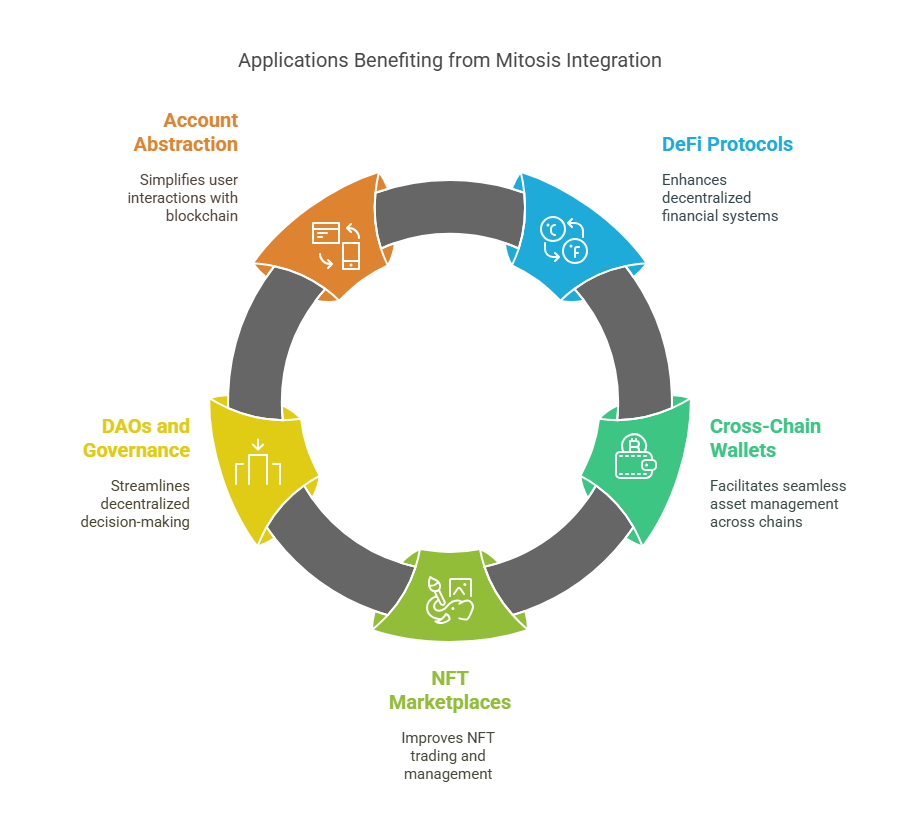
These are just a few examples illustrating the wide range of possibilities. By integrating Mitosis, you can significantly expand your dApp's functionality, attract users from other ecosystems, and create a truly seamless multichain experience. In the next part, we will discuss the expected developer toolkit and next steps.
3. Developer Toolkit and Next Steps
Part 3: The Expected Developer Toolkit
For Mitosis integration to be not only possible but also convenient, developers need a quality set of tools and resources. Although the specific composition of the toolkit will depend on Mitosis's current development stage, here's what can be expected from a developer-focused project:
- Software Development Kits (SDKs): Library sets for popular programming languages (likely JavaScript/TypeScript for frontend and possibly Solidity for smart contracts) that abstract away the low-level details of interacting with the Mitosis protocol. SDKs should simplify tasks such as:
- Initiating cross-chain transfers.
- Querying transaction statuses.
- Getting information about supported networks and assets.
- (For smart contracts) Sending and receiving cross-chain messages/calls.
- Application Programming Interfaces (APIs): A set of API endpoints providing data on the Mitosis protocol's state, transaction history, available liquidity across different networks, and other relevant information that can be used in your dApp's frontend or backend.
- Detailed Documentation: Clear, comprehensive documentation is key to successful integration. It should include:
- An overview of the Mitosis architecture.
- Integration guides for different models (frontend, smart contract).
- Code examples and use cases.
- API and SDK reference.
- Information on security and best practices.
- Testnets: Access to stable testnets where developers can safely experiment with Mitosis integration without risking real assets. Testnets should be accompanied by faucets for obtaining test tokens.
- Developer Support: Channels for communication with the Mitosis team or the developer community (e.g., a dedicated Discord channel, forum) for getting help, discussing issues, and sharing experiences.
Important Note: At the time of writing, the full suite of these tools may still be under development. It is crucial to follow official Mitosis announcements to stay informed about the availability of SDKs, APIs, and documentation.
Part 4: How to Get Started? Next Steps for Developers
Even if the full toolkit isn't released yet, you can take steps now to prepare for integration with Mitosis:
- Study the Concept: Deeply understand how Mitosis works, its EOL model, security mechanisms (AVS), and the messaging protocols it uses (Hyperlane). Study the available documentation and Medium articles.
- Follow Announcements: Subscribe to official Mitosis channels (Twitter, Discord) to not miss news about testnet launches, SDK releases, and developer documentation.
- Participate in Testnets (if available): If Mitosis runs public testnets, actively participate not only as a user but also from the perspective of potential integration. Try interacting with the protocol programmatically if possible.
- Join the Community: Join the Mitosis Discord, look for developer channels (if they exist), and start engaging with the team and other developers. Ask questions, share ideas.
- Design with Cross-Chain in Mind: Start thinking about how cross-chain functionality could improve your existing dApp or what new cross-chain applications you could build with a tool like Mitosis at your disposal.
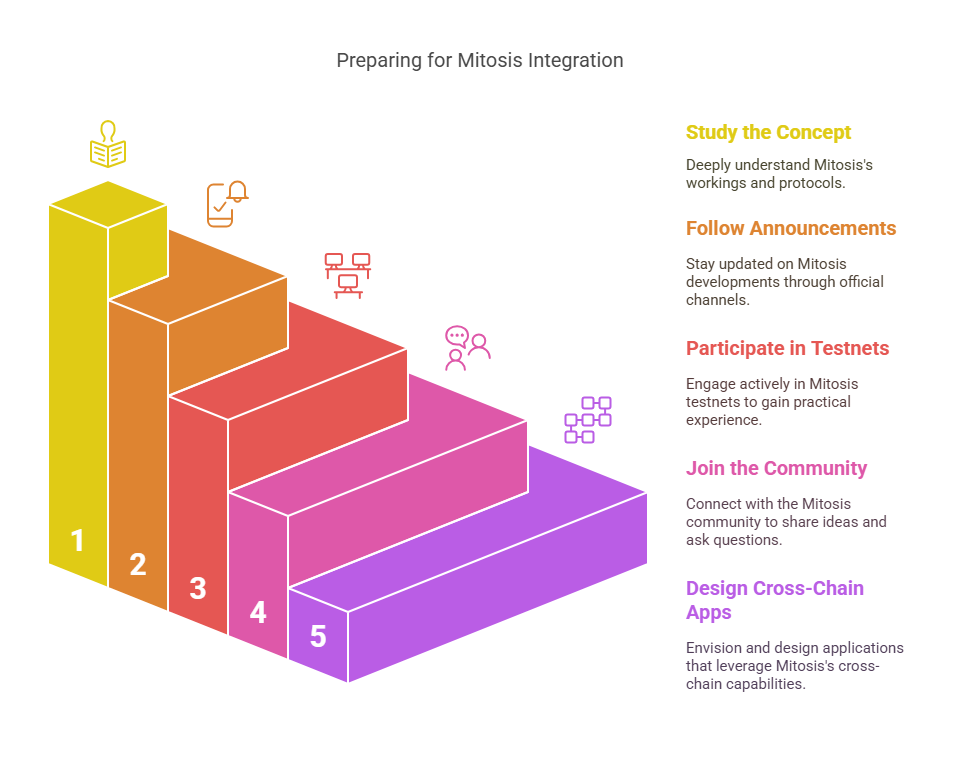
Conclusion: Building a Borderless Future Together
Mitosis offers developers a powerful solution to overcome the barriers of fragmentation in the multichain world. By integrating Mitosis, you can expand your application's reach, provide users with a better experience, and focus on your core task – building innovative decentralized applications.
Although the journey towards a fully realized cross-chain future is just beginning, protocols like Mitosis are laying the necessary foundation. By following the project's development and preparing to integrate its tools, you can be among the pioneers building a truly interconnected and accessible Web3 world.
Learn more about Mitosis:
- Explore details on the official website: https://www.mitosis.org/
- Follow announcements on Twitter: https://twitter.com/MitosisOrg
- Participate in discussions on Discord: https://discord.com/invite/mitosis
- Read articles and updates on Medium: https://medium.com/mitosisorg
- Blog: https://blog.mitosis.org/
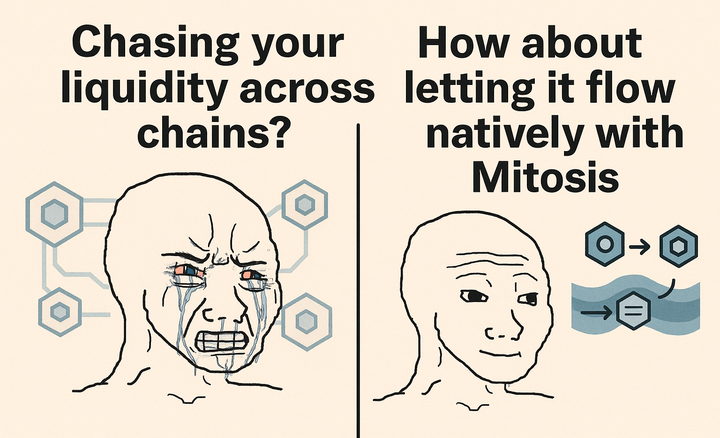
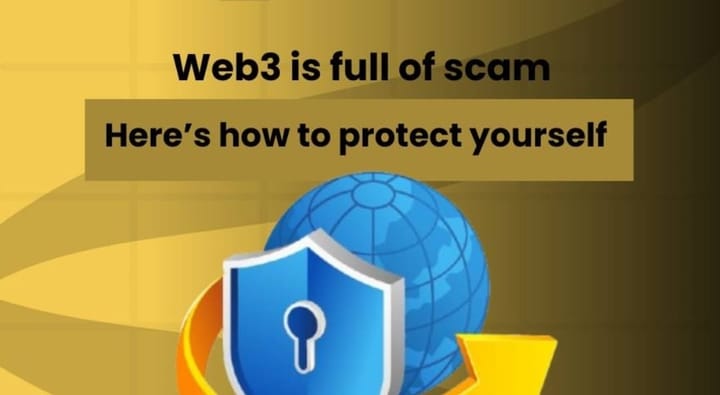
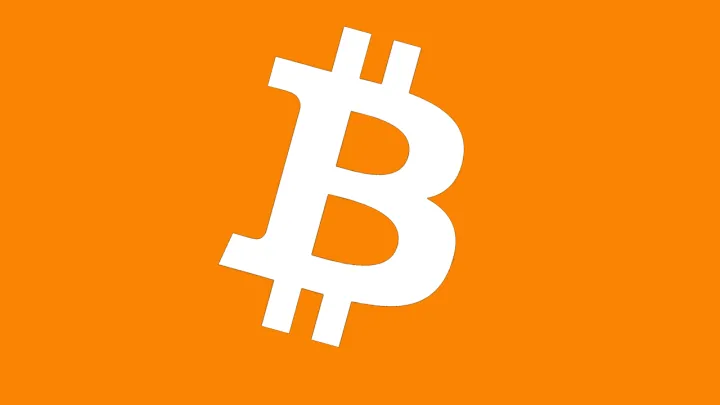
Comments ()